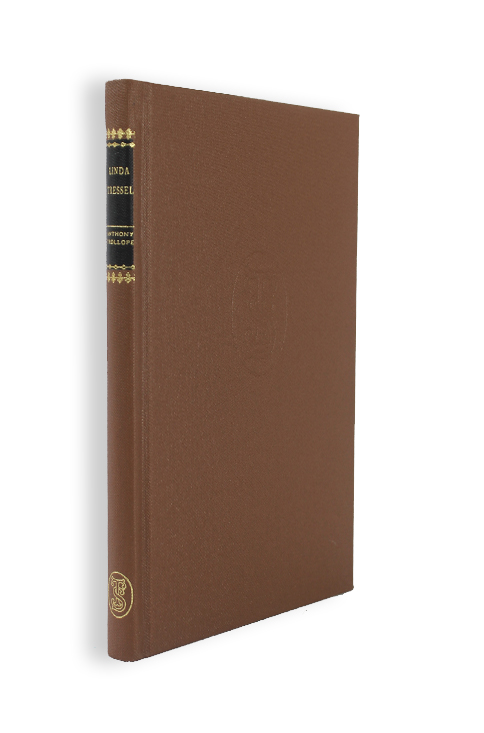Linda Tressel
£20.00
Available to members only
Introduction by Joanna Trollope
179 pages
Edinburgh and London, William Blackwood and Sons, 1868.
Originally published in Blackwood’s Magazine, Oct 1867 – May 1868.
Out of stock
Linda Tressel was the second of three novels Trollope intended to publish anonymously in the 1860s. All three were written in an emphatically different style, none more so than this one. It is also no coincidence that they are all set in Europe: Linda Tressel is set in Nuremberg, then part of Bavaria. Like the other two, Nina Balatka and The Golden Lion of Granpere, it is a romance, and as Joanna Trollope has pointed out, it retains a flavour of the fairy tale.
Linda Tressel is orphaned as a little girl, and her fanatically religious aunt, Charlotte Staubach, has left Cologne to come and live with her niece in the red-gabled family house, situated on an island in the middle of the river which runs through the town. The house belongs to Linda as her only heirloom from her father. Aunt Charlotte is, because of her own sacrifice, to have a life interest in the house, but to supplement their meagre income they have taken in a lodger, Peter Steinmarc, a middle-aged town clerk. The only other occupant of the house is a devoted elderly housekeeper called Tetchen.
The story concerns Aunt Charlotte’s increasingly misguided attempts to make Linda, now aged twenty, marry Peter Steinmarc. The clerk sees an oportunity to gain status, a desirable property on the river, and a pretty young wife. Linda, however, is already secretly in love with Steinmarc’s young cousin, Ludovic Valcarm. Aunt Charlotte is dismayed by this news, for she considers Ludovic to be entirely unsuitable. She is quite right, but for entirely the wrong reasons: her disapproval derives from her religious scruples and her hope that a man of Steinmarc’s age will be able to tame Linda and crush any flightiness within her. In fact, Valcarm is a wild young man who is suspected by the town authorities of being an anarchist. The innocent Linda, who has led an extremely sheltered life with her aunt, is completely unversed in the ways of the world and of course swept off her feet when Ludovic Valcarm crosses the river to the island and – with Tetchen’s misguided connivance – breaks into the house to see Linda whilst her aunt is out at church.
Linda is finally pressured into eloping with her lover, when her aunt insists that she marry the stuffy clerk. But Valcarm is swiftly arrested by the authorities and Linda returns to face outrage and shame from her aunt, and rejection by the affronted Steinmarc.
Her ultimate fate can be guessed at, for there is much made all the way through the novel of Aunt Charlotte’s desire to ‘crush’ Linda. Her aim seems to be to eradicate all feelings of sensuality, love, affection and romance from her niece’s heart, indeed to break it. Trollope reflects here upon the insurmountable difficulties faced by a young nineteenth-century girl, caught uncomfortably – and finally crushed – between the differing aspirations of three people wholly insensitive to her own true feelings.
